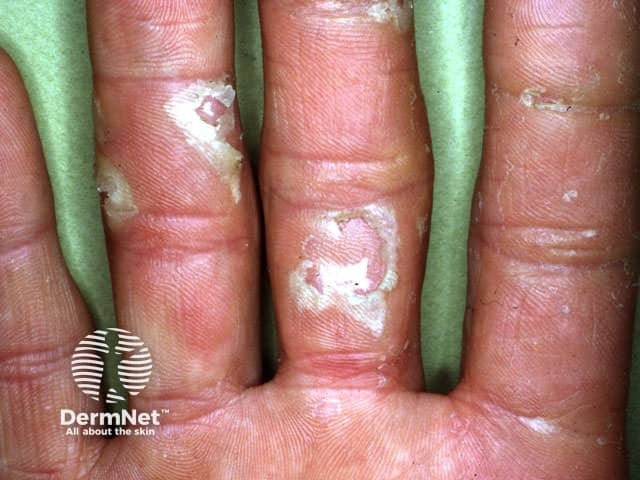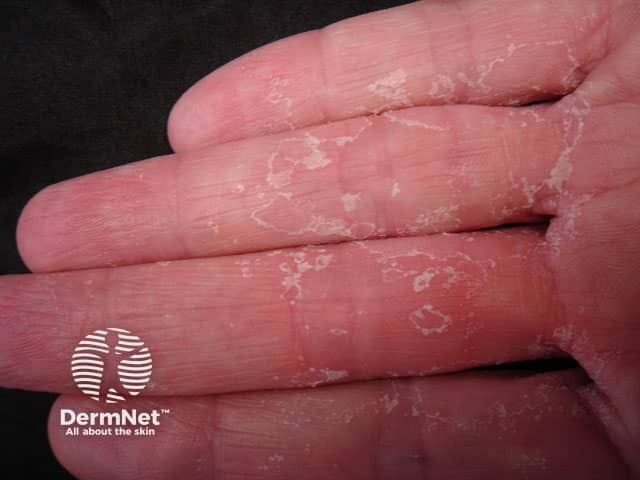Main menu
Common skin conditions

NEWS
Join DermNet PRO
Read more
Quick links
Author: Dr Amanda Oakley, Dermatologist, Hamilton, New Zealand, 1999. Updated by Dr Oakley, December 2018.
Introduction Demographics Causes Clinical features Diagnosis Differential diagnoses Treatment
Keratolysis exfoliativa is a common skin condition in which there is focal peeling of the palms and less often the soles. It is also known as exfoliative keratolysis, dyshidrosis lamellosa sicca, and focal palmar peeling.

Exfoliative keratolysis

Exfoliative keratolysis

Exfoliative keratolysis
Keratolysis exfoliativa generally presents in young active adults. Some individuals have a family history of the disorder.
The cause of keratolysis exfoliativa is unknown. Microscopy reveals cleavage within the outside horny layer of skin, the stratum corneum. It is thought that for some reason the desmosomes on the corneocytes separate from each other prematurely. No genetic abnormality has been detected to date (2018).
The symptoms are aggravated by exposure to irritants including water, soap, detergents and solvents.
Keratolysis exfoliativa is more common during the summer months in about 50% of affected individuals. It may be more common in those with sweaty palms due to localised hyperhidrosis.
The first sign of keratolysis exfoliativa is one or more superficial air-filled blisters on the fingers or palms. The blisters burst to leave expanding collarettes of scale and circular or oval, tender, erythematous peeled areas. These peeled areas lack a normal barrier function and may become dry and cracked. However, they are not generally itchy.
Sometimes on the ends of the fingers, the split in the skin is deeper, in which case the skin feels hard and numb and takes longer to peel off. There can be multiple layers of peeling skin (lamellae).
Eventually normal skin forms, but frequently exfoliative keratolysis recurs within a few weeks.
Keratolysis exfoliativa is diagnosed clinically. Supportive investigations may be undertaken.
Keratolysis exfoliativa is distinct from the following conditions.
Keratolysis exfoliativa does not improve with topical steroids, unlike hand dermatitis.
The following may be helpful: